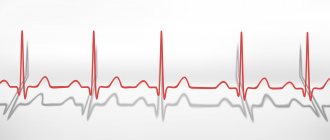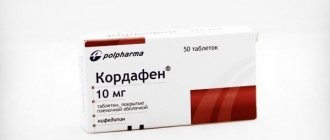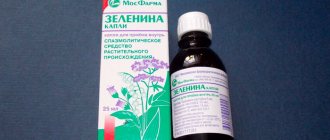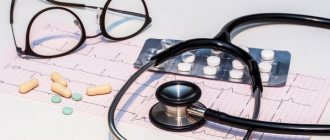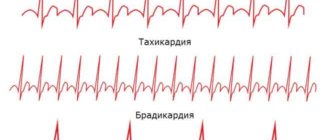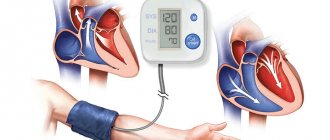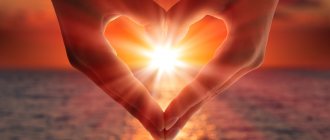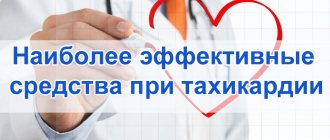Benefit
Initially, the medicine was used to treat heart diseases that arose as a result of high energy consumption, as well as when the body was weakened. However, it was most often used by relatively healthy people, people involved in sports, as well as those who wanted to lose extra pounds.
The product is available in the form of capsules, liquid for injection, and also in solid dosage form. The main component is meldonium, a compound found in the cellular structures of the human body.
The drug promotes the onset of complex chemical processes in the body and acts as follows:
- increases the body's endurance, increases performance;
- has a positive effect on the state of tissue immunity;
- promotes mental and physical stability under severe stress;
- reduces the load on the heart.
Thus, the effect of mildronate on the body is predominantly positive. The medicine quickly delivers oxygen to cells and tissues, cleanses organs of toxins and metabolic products, and also protects them from destruction.
With regular use of the product, the human body is able to withstand intense stress for a long time and recover quickly. All these features make it possible to use it both in therapy and in the prevention of various disorders of the heart, blood vessels, as well as in cases of circulatory disorders in the brain.
Mildronate has shown greater effectiveness in ischemic disease due to its ability to slow down cell death and accelerate the regeneration process. In addition, in case of heart failure, the medicine increases the contractility of the myocardium and makes the body more resistant to physical stress.
How to speed up your heart rate?
Circulatory disorders caused by any form of bradycardia have a risk of developing complications:
- IBS.
- Impaired blood supply to the brain with functional and organic pathologies.
- Chronic oxygen deficiency of internal organs, leading to a decrease in quality of life.
Oxygen deficiency has an extremely negative effect on children whose bodies are developing and growing.
To prevent a decrease in heart rate and possible complications, doctors advise taking the following preventive measures:
- Diet. It is recommended to completely change your diet. Do not consume a lot of fats and carbohydrates. Add vegetable oils and nuts to the list of foods consumed. The diet for cardiac bradycardia is aimed at reducing the calorie intake.
- Therapeutic and health-improving physical education. It is necessary to exercise regularly.
- Rejection of bad habits. Smoking and alcoholic beverages contribute to disruption of heart automaticity and conduction, and with a rare heartbeat this can complicate the situation.
- Elimination of stressful situations. It is recommended to take sedatives and avoid emotionally traumatic situations.
- Boosting immunity. Taking medications to enhance immunity and vitamins will increase the body's resistance to infectious diseases.
In addition to changing your lifestyle and taking medications, you should regularly see a cardiologist and adjust preventive actions if necessary.
If cardiac bradycardia occurs infrequently and in a mild form, Zelenin drops can be used for treatment and prevention. This product consists of the following components:
- Menthol.
- Valerian.
- Lily of the valley.
- Belladonna.
Below are medications with a description of their effects on the body and contraindications for use.
Corvalol
This remedy is used in most cases as a preventive measure. However, the effectiveness of Corvalol has been proven: it eliminates severe symptoms of bradycardia. Patients with arrhythmia are recommended to take 30-40 drops of Corvalol.
The drug begins to act half an hour after taking the drug. The full effect of Corvalol appears after 2 hours and lasts up to 8 hours.
If you constantly use Corvalol for prevention, you can achieve a positive result. But it is considered an auxiliary remedy for basic treatment and a measured life.
Riboxin
The drug, by restoring coronary circulation, normalizes heart rhythm and increases the energy balance of the myocardium. Riboxin has the following contraindications:
- Side effects may occur: allergic reaction and skin itching. Symptoms disappear after stopping the use of tablets.
- Metabolic disorders in the bladder or gout.
- Kidney diseases.
In case of an overdose of Riboxin, the following symptoms appear:
- Itching.
- Increased urea levels in the blood.
- Gout.
Izadrin
It is used to improve the conductive function of the heart and the excitability of the myocardium, due to which the contractile function of the myocardium is normalized. Used for heart blockades. The effect is comparable to the effect of adrenaline, but this drug does not have the following side effects:
- Increased blood pressure.
- The occurrence of angina pain.
- Decreased well-being.
Doctors, as a rule, prescribe Izadrin to patients with blockade of the AV node of the heart. Izadrin eliminates heart block and allows you to restore heart rhythm. Well suited for the prevention of attacks of cardiogenic shock. If the patient has acute myocardial infarction, hypersensitivity or atherosclerosis, the drug is not prescribed.
Panangin
The preparation contains two microelements that are responsible for the rhythm of the heart - potassium and magnesium. The first promotes the conduction of nerve impulses between the cells of the heart muscle, therefore a lack of potassium is the direct cause of heart bradycardia. Magnesium is needed to maintain sufficient potassium in the body.
Panangin is not prescribed in the following cases:
- Chronic kidney diseases.
- Amino acid metabolism disorder.
- Fructose and sorbitol intolerance.
Atropine
An effective remedy for a rare pulse, which is caused by the activity of the vagus nerve or intoxication with certain drugs.
With a slight overdose of atropine, the following symptoms may appear:
- Feeling of dry mouth.
- Inability to focus on an object, dilated pupils.
- Dizziness.
- Problems with urination.
- Rapid pulse.
Isoprenaline
Isoprenaline is an analogue of adrenaline. It is administered to the patient intravenously and increases heart rate by stimulating adrenergic receptors in the heart. Isoprenaline has a beneficial effect on the tone of the sympathetic nervous system.
The following side effects may occur, which indicate the need to suspend isoprenaline therapy:
- Increased blood pressure.
- Rapid pulse.
- Trembling of limbs.
- Vomiting.
- Painful sensations in the head.
The use of isoprenaline is contraindicated in the following cases:
- Angina pectoris.
- Severe atherosclerosis.
- Myocardial infarction in the acute period.
- Hypersensitivity to some components of the drug.
Atrovent
When using Atrovent, a prolonged and pronounced increase in heart rate is observed. This drug does not affect the functioning of the central nervous system. Prescribed for patients with sinus bradycardia caused by the vagus nerve.
The following side effects are noted:
- Poor appetite.
- Problems with visual perception.
- Constipation.
- Tachycardia.
- Feeling of dry mouth.
- Problems with urination.
Contraindications for use are as follows:
- Increased intraocular pressure.
- First trimester of pregnancy.
- Prostate adenoma.
- Age under 6 years.
The action of the drug is similar to isadrin. Orcinrepalin sulfate can significantly improve conductivity, relieve blockade and stimulate the heart muscle.
Contraindications for use:
- Increased sensitivity.
- Atherosclerosis.
- Acute myocardial infarction.
Ipratropium
Ipratropium is prescribed for sinus bradycardia; the drug has no effect on the nervous system. Ipratropium increases your heart rate.
Not recommended for use when:
- Prostate adenoma.
- Frequent heartbeat.
- Children under 18 years old.
- In the first trimester of pregnancy.
Bradycardia is one of the types of arrhythmia that requires careful study. If a rare pulse appears, you should urgently seek help from a qualified doctor. Under no circumstances should you take any medications without consulting a cardiologist. Only a complete examination will reveal the severity, underlying causes and possible complications. The correct selection of drugs will help to effectively combat a rare pulse.
Traditional drugs can be effectively combined with traditional medicine.
Indications for use
Purchasing the product in pharmacy chains is currently not a problem. It is often used in the complex treatment of the following diseases:
- pathologies of the heart and blood vessels, ischemia, heart attack;
- inflammatory processes in the muscle tissue of the heart;
- circulatory disorders in the brain of a chronic and acute nature.
Other indications for use are:
- deterioration in performance;
- rehabilitation period after surgery;
- excessive physical stress;
- some diseases of the retina, for example, hemophthalmos;
- bronchitis and asthma. In these cases, mildronate is used as an immunomodulatory drug.
Treatment of heart diseases
Almost all heart disorders are caused by dysfunction of the myocardium.
Metabolic changes occur in the myocardium due to disruptions in the blood supply to the heart and blood flow. Such disorders usually lead to arrhythmia, angina pectoris, heart attack, hypertension, myocardial dystrophy and other diseases.
And if the heart lacks energy to function flawlessly, then the delivery of the components of the drug Riboxin into the myocardial muscle makes up for this deficiency. The medication is prescribed for many heart ailments, but it is of great importance for angina pectoris (a type of coronary artery disease).
Use by athletes
The therapeutic abilities of the product allow it to be used in professional sports, as well as for healthy people who need additional help in combating physical stress. In these cases, medications containing meldonium are ideal:
- Mildronate effectively increases the capabilities of the human body, increases stability and increases the dynamic activity of athletes;
- a positive effect of the product on the effectiveness of training has been noticed: thanks to the active nutrition of the muscular system and heart, it relieves fatigue, which significantly increases the duration of approaches;
- lost energy is restored much faster, while metabolic products are released from the organs more intensively;
- the effect of the substance was established during strength exercises during training, as well as during stress on the heart.
It is worth noting that the drug is not a doping drug in the literal sense of the word, and does not lead to muscle growth. Its effect is precisely to relieve fatigue and increase endurance.
The substance included in the composition is often used in complex removal of excess body weight. However, it cannot be used as an independent drug for weight loss. Meldonium helps speed up metabolism, recovery processes in the body, and also reduces the amount of cholesterol. This allows a person to quickly adapt to exercise, which leads to weight loss. That is why, combining mildronate with sports, you can quickly lose extra pounds.
Riboxin: contraindications and side effects
A significant advantage of the drug is the minimal number of side effects.
Allergic manifestations, expressed in the form of hives and an itchy rash, are quite rare.
At the same time, the allergy manifests itself in a more severe form if the drug is administered intravenously. But even with minimal signs of allergy, the drug must be discontinued.
Also, long courses of taking Riboxin can provoke a gout attack. This disease, accompanied by severe pain, is characterized by the accumulation of uric acid salts in the joints. One of the elements of the drug, purine, is involved in the metabolism of uric acid. Therefore, its significant accumulation in the body, as a rule, leads to gout.
In some cases, the use of Riboxin is simply unacceptable. So, contraindications to taking the medicine are:
- some kidney diseases;
- leukemia in the final stages;
- late stages of pregnancy;
- lactation;
- gout;
- excessive levels of uric acid in the blood;
- increased sensitivity to the components of the drug.
How to use
Proper use of the medication is a guarantee of excellent results, but it must be prescribed by the attending physician.
Systematic use of the drug may result in a decrease in its therapeutic effect, which is why the patient should carefully follow the recommended regimen:
- the medicine is usually taken before 5 pm: the ingredients it contains increase excitability and can negatively affect sleep;
- for medicinal purposes, mildronate is prescribed 500-1000 mg twice a day;
- The duration of treatment depends on the individual characteristics and goals pursued, and most often lasts up to 12 days.
Amateur athletes take 0.5 g per day for 2 weeks, after which they take a break for 14 days and repeat the therapy. For professionals, the dosage is 1 g per day.
Physiology of the heart and the mechanism of its work
The heart is the main part of our body. And it is impossible to understand well why bradycardia occurs and what the mechanism of this process is without knowledge of the principles of operation of the cardiovascular system. First of all, it can be noted that blood belongs to connective tissue; its uniqueness lies in the fact that in addition to its protective function, it also transports various nutrients to all tissues and gas exchange, “taking” carbon monoxide from cells. The movement of blood is regulated by the heart.
On the outside it is covered with muscle tissue called myocardium. In humans, there are two types of muscles: smooth, which is part of the structure of the walls of almost all internal organs, and striated or skeletal. The cardiac muscle is in the middle in this classification, since in terms of the intensity of contractions it is similar to the striated muscle, but it functions on its own without the participation of human consciousness. This is what distinguishes smooth muscle tissue.
When the heart functions properly, contraction (systole) is replaced by relaxation (diastole). During diastole, the atria fill with blood, then compression of the myocardium directs it into the cavity of the ventricles. After this, the systolic phase begins, in which venous (carbon monoxide-containing) blood enters the pulmonary circulation, and arterial (oxygen-rich) blood enters the pulmonary circulation. Each of these stages can last only a fraction of a second.
The correct alternation of systole and diastole of the heart muscle is determined by the conduction system. Its regulation is carried out by the sympathetic part of the central nervous system (it increases the heart rate) and the parasympathetic part, represented by the vagus nerve. This effect, on the contrary, reduces heart rate. Their combination is called extracardiac regulation of cardiac activity.
Not all myocardial cells can generate the impulse necessary for its contraction. Only the sinus node, located in the upper atrial section, and the atrioventricular node, located on the border with the ventricles, have this property. Pacemaker cells are localized there, generating excitation that spreads throughout the myocardial muscle from node to node and further along the bundle branches and Purkinje fibers.
What physiological changes are noted in the heart during bradycardia?
Normally, the heart rate increases during physical activity, anxiety, and heat and, conversely, decreases during sleep. It must be said that this is a condition that is considered physiological, since the pulse rate returns to normal after some time. But with bradycardia, signs of a decrease in heart rate arise due to a violation of the conduction system of the heart. It can be:
- malfunction of the sinus node, this disease is called sinus (or supraventricular) bradycardia. It is characterized by a normal picture on the ECG (electrocardiogram), only a relative decrease in pulse rate is noted. Extracardiac regulation of the sinus node occurs with the participation of the nervous system, so in most cases the causes of disruption of its functioning lie outside the heart. It is extremely rare that this part of the conduction system is affected by infections or sclerotic changes in the myocardium;
- bradycardia caused by blockades of varying degrees in the structure of impulse conduction (at the level of the His bundle or atrioventricular node). Often, such a violation leads to the fact that contraction of the ventricles occurs several times less frequently than the atria. This increases the risk of blood clots; severe bradycardia is replaced by arrhythmia with increased heart rate or the appearance of unnecessary contractions.
The force with which blood is pushed out of the ventricles and into the atria determines blood pressure. In its regulation, not only contractions of the heart myocardium play a role, but also vascular tone. Typical symptoms of bradycardia include hypotension, but sometimes this disease is combined with hypertension. This is especially true for sick sinus syndrome, in which a high pulse is replaced by a low heart rate, atrial fibrillation, and severe heart failure occurs. In this case, dizziness often begins, and loss of consciousness may occur.
Reasons for appearance
Typically, bradycardia appears due to a malfunction of the sinus node. Its disorder, irritation occurs due to various disorders, and the sinus node becomes unable to produce above 60 beats per minute.
Changes in the myocardium affecting the sinus node.
- Hypothermia.
- Increased activity of the parasympathetic nervous system.
- Heredity.
- High intracranial pressure (meningitis, bruise, cerebral edema).
- Drug-induced bradycardia (after taking hidin, digitalis, etc.).
- Consequences of nicotine or lead poisoning.
- Jaundice, typhoid fever, starvation.
The main symptoms of bradycardia:
- Weakness throughout the body, constant fatigue of a person, lethargy.
- Reduced blood pressure.
- A state of fainting or fainting.
- Increased fatigue
- even under light loads.
- Cold sweat.
- Rapid and difficult breathing.
- Aching, pressing chest pain.
- Difficulty focusing, constant absent-mindedness.
- Fluctuating blood pressure.
- Darkening in the eyes, circles before the eyes.
- Continuous dizziness.
In some situations, the symptoms are not clearly expressed, and bradycardia will be diagnosed only with the help of an ECG. However, such cases are quite rare.
- Absolute bradycardia. A specialist can identify this quite quickly, the symptoms are clearly pronounced.
- Relative bradycardia. It can be a complication after prolonged fever, meningitis, various injuries and infections.
- Moderate bradycardia. This includes the case when when a person inhales, the heart rate increases, and when exhaling, it decreases. (breathing rhythm disturbance).
- Extracardiac bradycardia. Its development is possible with hypofunction of the thyroid gland, various neurological disorders and diseases of the internal organs.
Classification
- Organic. It is provoked by myocardial infarction, myocarditis, and cardiosclerosis. These diseases weaken the sinus node, leading to its disease, which is why bradycardia develops.
- Medicinal. This is achieved by taking cardiac glycosides, reserpine, verapamil, nifedipine, etc.
- Toxic. This form of arrhythmia is caused by serious intoxication of the body due to hepatitis and typhoid fever.
Normal heart rate values, types of bradycardia
Normally, in an adult, the pulse rate fluctuates between no less than 60 - 80 beats per minute. However, these figures are approximate. For example, for people who professionally engage in outdoor sports and are accustomed to intense physical activity, the development of bradycardia is typical. Similar symptoms can also occur with certain congenital structural features of the blood vessels or conduction system of the heart. Age is also of great importance.
In newborns, a heart rate of up to 140 beats per minute can be considered normal, in children under 6 years old it is 105–130 beats/min., in adolescents under 10 years old it is within 90–105 beats/min., and in young people people aged 16 years – up to 90 beats/min. In older men and women, moderate bradycardia develops due to a decrease in the tone of the blood vessels, caused by changes in the structure of their walls. Hormones also actively participate in the nervous regulation of heart rate. Therefore, during puberty, bradycardia or, conversely, tachycardia can be considered a variant of the norm and do not require treatment (naturally, if such a disorder does not manifest itself against the background of heart failure or other pathological causes). Depending on the change in heart rate, several forms of the disease are distinguished:
- a mild type of bradycardia is a decrease in heart rate by approximately 15% less than normal; naturally, the exact heart rate value for this type of pathology can vary depending on age, for an adult it is 50 - 55 beats per minute;
- moderate bradycardia occurs when myocardial contractions decrease by 30–35% (up to 40 beats per minute in people over 18 years of age). A low heart rate causes initial symptoms of hypoxia (oxygen deficiency) of body cells;
- Severe bradycardia is difficult to tolerate for humans and is most often a consequence of serious pathology. In infants, such a disorder requires immediate resuscitation due to the high risk of death.
Low heart rate during bradycardia causes insufficient blood circulation in the brain. Hypoxia also has a bad effect on other internal organs. Therefore, this condition requires careful examination. After it has identified the causes of bradycardia, drug or surgical treatment is necessary.
Treatment of bradycardia at home
According to doctors, the average heart rate of a healthy person is 60 beats per minute.
If this value in a patient is less than normal, the doctor may diagnose bradycardia. But is this verdict a pathology in all cases? What to do and what methods can be used at home to get rid of bradycardia? The concept of normal is different for each organism; it does not have to be exactly 60 beats per minute. For some people, the normal heart rate is 90, for others it is 50. But if the rate is noticeably reduced, the specialist informs the patient that he has bradycardia.
Types of disease based on stroke frequency:
- Easy. Heart rate (HR) varies between 55 and 65 beats.
- Moderate. Heart rate ranges from 45 to 55 beats.
- Pronounced form. Heart rate less than 45.
With moderate to mild bradycardia, the heart steadily pumps blood throughout the body without disrupting blood flow in the body. The same cannot be said about severe bradycardia, since in this case there is obvious dysfunction of the heart, which causes impaired blood circulation. This kind of deviation leads to pallor of the skin and mucous membranes. There are disturbances in the functioning of the intracranial arteries. All this can cause seizures and sudden loss of consciousness.
Bradycardia has symptoms that make it possible to detect this damage to the heart muscle in time, and the doctor will recommend rehabilitation measures and treatment: which pills will be most effective in a particular case, what types of measures will help eliminate the manifestations of the disease more quickly.
If indicators characteristic of this pathological condition appear, such as a feeling of pain in the heart area, difficulty breathing, the appearance of shortness of breath even with a small amount of stress received (physical or psychological), as well as chronic fatigue syndrome, drugs for bradycardia should be prescribed.
In case of cardiac bradycardia, the attending cardiologist may prescribe drugs whose action is aimed primarily at eliminating the existing external manifestations of the disease.
The general principles that must be followed in the treatment of the pathology in question are the following:
- The initial stages of the lesion, which do not have very pronounced manifestations, do not cause serious harm to health, and if bradycardia is accidentally detected, the doctor usually prescribes a therapeutic method of influence. In this case, medications stabilize the heart rate without causing harm to the heart muscle and do not provoke the appearance of side effects on other internal organs.
- A significant slowdown in the frequency of contractions of the heart muscle, which already poses a serious health hazard and negatively affects overall health, requires more active corrective measures.
- Advanced stages of bradycardia, which pose a real threat to health and worsen the performance of the cardiac system as a whole, require the use of more effective interventions. Usually this is a surgical intervention, which is indicated when there is a serious danger to the health and even life of the patient.
If manifestations of bradycardia are observed with elevated blood pressure, then the presence of hypertension should be taken into account and medications should be used to treat the underlying disease that not only stabilize the heart rate, but also prevent an increase in pressure.
To obtain the most pronounced treatment results, medications for hypertension are usually used. In this case, the doctor must take into account such indicators of the victim’s health as age, the body’s susceptibility to the chosen treatment regimen, and indicators of how high the patient’s blood pressure is.
If the most obvious manifestations of the disease are present, the symptoms are constantly progressing, it is necessary to monitor the treatment process, and if the result is insufficiently positive, review it, making the necessary adjustments and changes. Monitoring the pressure indicator, eliminating the negative manifestations of the disease, as well as the possibility of using surgical intervention if there is a danger to the patient’s life are the main directions of the treatment process for severe symptoms of bradycardia.
Is it possible to manage using only medications at the initial stage of bradycardia? The answer to this question worries almost all patients with this disease. Of course, with individual manifestations of the disease, in the absence of serious negative effects on health and the risk of consequences, the doctor may decide to use only a certain method of drug therapy, which will eliminate the negative impact of surgical intervention on the body as a whole.
Drugs that should be taken in the initial stages of identified bradycardia usually include those that indirectly affect the heart muscle, normalizing metabolic processes in cells, stabilizing the rate of heart contractions:
- Coenzyme Q10 - this modern remedy should only be taken by adults, children and women during pregnancy; it is contraindicated. The drug has proven itself to be effective in stimulating oxidative processes in cells and eliminating energy stagnation in them;
- Vitrum Cardio Omega-3 is an excellent remedy whose action is aimed at blocking arrhythmic effects and has a pronounced antioxidant effect. These capsules are also recommended for use by adults; they are not usually prescribed for children and pregnant women;
- Actovegin, which is a solution in ampoules, well accelerates the metabolic process in cells, prevents sclerosis of blood vessels and has a pronounced stimulating effect on heart cells. The drug allows you to increase heart contraction rates and stabilize processes in its tissues.
- In the initial period, this disease is well treated in a therapeutic way: vitamins for bradycardia, bed rest, stress relief and lifestyle regulation allow you to get a pronounced positive result.
The listed medications are prescribed at the initial stage of the disease; they all increase heart rate by gently stimulating it. A drug such as Corvalol can be prescribed in cases where there is an increase in blood pressure, in stressful situations - in this case, Corvalol manifests itself as a mild sedative with a minimum number of side effects.
Strong drugs that significantly stimulate the process of contraction of the heart muscle, for example, Atropine, should not be taken independently: there must be appropriate indications for its use. Only a specialist can decide on their use.
We invite you to familiarize yourself with: Chronic cardiopulmonary failure code ICD 10 -
At a more advanced and moderate stage of bradycardia, the doctor prescribes drugs with a more pronounced effect. The regimen for taking such medications is determined by the doctor, taking into account the patient’s individual health indicators.
Medications for moderate forms of the disease include:
- ginseng root;
- Zelenin drops;
- caffeine.
The listed medications should only be taken under the supervision of a physician.
Dangerous and not very
Causes of physiological bradycardia
Let's focus on mild functional bradycardia, which was not the result of blockade of the conduction system of the heart, heart attack or other diseases. We have already mentioned a low heart rate in athletes, fluctuations in heart rate in a teenager or in old age. This condition does not require treatment or take any medications if physiological bradycardia does not bother the person and is not associated with other diseases. Sometimes a slow heart rate is noted during pregnancy.
Tachycardia occurs more often during pregnancy, which is associated with an increasing load on the woman’s internal organs and systems. But there are situations when, in the later stages, the cause of bradycardia may be compression of the processes of the vagus nerve located near the diaphragm by the enlarged uterus. A mild form of the disease does not affect the health of the fetus. However, if a slow pulse is accompanied by hypotension, pregnant women should be treated with drugs that stimulate blood flow in the placental vessels.
Doctors recommend more frequent examinations using cardiotocography (CTG). This allows you to assess the state of the fetal cardiovascular system and take timely measures to prevent severe hypoxia and intrauterine complications. Usually all symptoms go away after childbirth. A description of the physiological causes of a slow heart rate will be incomplete without mentioning what reflex bradycardia is.
There are certain areas on the human body, the intentional or unintentional stimulation of which causes the heart to speed up. This is the carotid node in the neck, the eyeballs. By the way, pressing on these points is an emergency measure for immediate relief of an attack of tachycardia at an early stage. However, with a normal rhythm, bradycardia is observed after such exposure.
Drugs for bradycardia caused by Lyme disease
Lyme disease is caused by the bacteria Borrelia burgdorferi, which is transmitted to humans through the bite of infected ticks. Symptoms can occur 3-30 days after the bite and can be severe, depending on the stage of infection. In some cases, signs appear several months after the bite.
Symptoms of Lyme disease
Early signs of illness include fever, chills, headache, fatigue, muscle and joint pain, and swollen lymph nodes—all of which are common with the flu. In 80% of cases, a rash is one of the first symptoms of the disease.
Without treatment, symptoms may progress. In particular, the following may occur:
- Severe headache or neck stiffness.
- Rash on other parts of the body other than the bite site.
- Arthritis with severe joint pain and swelling, especially in the knees.
- Loss of muscle tone or drooping of one or both sides of the face.
- Irregular heartbeat.
- Shooting pain, numbness, or tingling in the arms or legs
Stages of Lyme disease development
- Location: Flu symptoms such as fever, chills, headache, swollen lymph nodes, sore throat and usually a rash that is bull's eye, or uniformly round and red in color and at least 5 centimeters in diameter.
- Previous spread: Flu symptoms that now include pain, numbness, weakness in the arms and legs, vision changes, rapid heartbeat and chest pain, rash, and facial paralysis (Bell's palsy)
- Late spread: This can occur weeks, months or years after the tick bite. Symptoms may include arthritis, extreme fatigue and headaches, dizziness, sleep disturbances and mental distress.
Lyme disease treatment
Antibiotics are used to treat early stage Lyme infection. Patients usually take:
- Doxycycline for 10 days to 3 weeks or
- Amoxicillin and cefuroxime for 2-3 weeks.
- In 90% of cases, the antibiotic helps cure the infection. If this is not the case, patients can receive other antibiotics, either in tablets or intravenously.
For early spread of Lyme disease, which can occur when the infection is not treated, oral antibiotics are recommended. Indications for their use include the presence of symptoms such as facial paralysis and abnormal heart rhythm (bradycardia). Intravenous antibiotics are recommended if a person has meningitis, inflammation of the meninges and spinal cord, or more serious heart problems.
When the disease reaches an advanced stage, the patient may take oral or intravenous antibiotics. Patients with persistent arthritis undergo the standard treatment regimen prescribed for arthritis.
Classification of the disease depending on the etiological factor
Another classification system for bradycardia was based on the cause of the disease. It should be noted that cardiologists use all methods of systematization to most accurately describe the clinical picture and etiology of cardiac arrhythmias. In terms of determining treatment tactics, it is of interest to distinguish forms of the disease according to its etiology. So, depending on the cause of bradycardia in adults and children, the following types are distinguished:
- neurogenic (extracardial or vagal) develops against the background of a violation of the nervous regulation of the heart due to intracranial hemorrhage, increased pressure around the membranes of the brain. Pathological excitation of the vagus nerve occurs with peptic ulcer, hernia, renal or hepatic colic, glomerulonephritis;
- endocrine bradycardia occurs with different heart rates, the disease occurs when the function of the adrenal cortex and thyroid gland is impaired (hypothyroidism);
- toxic moderate or severe bradycardia begins due to intoxication when the excretory function of the kidneys or the filtration capacity of the liver is impaired. This group also includes a decrease in heart rate caused by excess concentration of potassium in the body (hyperkalemia);
- drug bradycardia occurs when there is an overdose of drugs from the group of antiarrhythmic drugs, cardiac glycosides and medications for the treatment of bradycardia. Some of them have the property of cumulation, resulting in intoxication;
- organic bradycardia develops after the onset of an underlying disease of the heart or blood vessels (ischemic damage). Often this symptom manifests as sick sinus syndrome;
- congenital constitutional-familial bradycardia is caused by genetic characteristics of myocardial innervation. In such patients, the influence of the vagus nerve on the heart predominates.
A tendency to slow heart rate was noted with frequent alcohol intake, after prolonged fasting. Smoking causes a lower than normal pulse rate to be associated with hypertension. Symptoms of reflex bradycardia also occur with osteochondrosis. Due to degenerative processes in the spine, the transmission of nerve impulses to the myocardium is disrupted.
Drug treatment
Only a doctor can determine the medications that should be taken for bradycardia. Under no circumstances should you treat yourself; you must first consult with a specialist. He will carefully study your condition and come up with the most optimal solutions.
In the first stages of bradycardia development or when it is mild, it is recommended to take Zelenin drops. They include the following herbal components:
Also, in individually selected dosages, medications containing:
Improves impulse conduction, affects excitability and improves contractile functions of the myocardium. Particularly effective for heart block. Its action is similar to adrenaline and ephedrine, but unlike them it does not have the following side effects:
- Increased blood pressure;
- Angina pain;
- Deterioration in general health.
Izadrin is especially recommended for use by people with atrioventricular conduction disorders. The tablets help relieve such heart blockade. The drug is also recommended for the prevention of attacks and cardiogenic shock.
Contraindications: acute myocardial infarction, atherosclerosis, hypersensitivity.
The drug is aimed at reducing arrhythmia, normalizing coronary circulation, and helping to increase the energy balance of the myocardium.
- In case of a violation of the metabolic process of uric acid, as well as in case of gout.
- A possible side effect is allergies and skin itching, which stop after taking the tablets.
- Patients with kidney disease should take the drug with caution and stop immediately if side effects are detected.
The instruction is not a universal rule for taking pills. It is necessary to consult a specialist and clarify the dosage of the drug.
- Itching and increased sensitivity of the skin due to individual intolerance to the components of the tablets.
- In some cases, an increase in urea levels in the blood may occur.
- With prolonged use of the drug, there is a high risk of gout.
For cardiac arrhythmia, Corvalol is taken rather as a prophylactic agent. However, it significantly reduces the severity of bradycardia symptoms. Corvalol is taken in the form of a solution; for cardiac arrhythmia, the recommended dose is 30–40 drops.
Corvalol works within 30 minutes after taking. However, the drug comes into full effect after two hours. Corvalol lasts about 8 hours.
Constant use of Corvalol as a measure to prevent attacks produces results. But its adoption must be combined with basic treatment, a measured lifestyle and diet.
Two active substances in the drug - potassium and magnesium - improve the condition of a patient suffering from bradycardia. Potassium is involved in the conduction of nerve impulses, which is directly related to the cause of bradycardia. Potassium also improves heart function.
Magnesium is an indispensable participant in reactions associated with the intake and expenditure of energy.
- The body's immunity to fructose and sorbitol.
- Amino acid metabolism disorder.
- Chronic diseases of the renal system.
Atropine is especially effective for bradycardia caused by overdose of certain drugs or increased mobility of the vagus nerve. Atropine is strictly prohibited for people suffering from high intraocular pressure.
A small overdose of the drug can cause the following:
- Dry mouth.
- Dilated pupils, absent-mindedness, lack of focus.
- Dizziness.
- Difficulty urinating.
- Increased heart rate.
Isoprenaline
The drug is administered intravenously. Isoprenaline is an analogue of adrenaline. It increases heart rate by stimulating adrenergic receptors, increasing the tone of the sympathetic nervous system.
Side effects include:
- Increased blood pressure.
- Increased heart rate.
- Tremor of the limbs.
- Nausea and vomiting.
- Dizziness and headaches.
- Hypersensitivity to the components of the drug.
- Angina pectoris.
- Acute myocardial infarction.
- Pronounced atherosclerosis.
The drug causes a pronounced and prolonged increase in heart rate. Has no effect on the central nervous system. The drug is recommended for patients with sinus bradycardia caused by the influence of the vagus nerve.
Side effects:
- Loss of appetite.
- Dry mouth.
- Impaired concentration.
- Impaired ocular perception.
- Constipation.
- Difficulty urinating.
- Increased intraocular pressure.
- Tachycardia.
- Increased eye pressure.
- Increased volume of the prostate gland.
- Narrowing in the gastrointestinal tract.
- First trimester stage of pregnancy.
Clinical manifestations
Signs of bradycardia depend on the degree of deviation of the pulse rate. With a mild form of the disease, symptoms are usually not pronounced. A paradoxical type of pathology may be observed. It is characterized by the preservation of normal heart rhythm in cases where physiologically this value should be high (after physical exertion or against the background of nervous strain).
Symptoms of a moderate type of disease appear more clearly. Thus, weakness during bradycardia is caused by insufficient oxygen supply to organs and tissues, especially to brain cells. For the same reasons, patients complain of frequent dizziness, decreased ability to work due to difficulties in perceiving information and memory deterioration. Another sign of cardiac dysfunction was shortness of breath.
This usually indicates concomitant hypertension. At first, the symptom appears only after brisk walking or exercise. However, with further progression of the disease, shortness of breath can develop at any time, day or night, and disrupts a person’s normal rest and sleep patterns. Headache with bradycardia is often observed in the neurogenic type of pathology due to increased intracranial pressure.
Nocturnal attacks of angina (acute pain in the chest) are a sign of atrioventricular block. Sometimes they are followed by paroxysmal (sharp) bradycardia in adults or children with loss of consciousness and possibly cardiac arrest (asystole). This condition is dangerous for a small child, so it is necessary to urgently call an ambulance. With sick sinus syndrome, other symptoms are also added.
Due to concomitant blockade of cardiac conduction, frequent alternations between bradycardia and tachycardia are possible. This negatively affects the condition of the sick person, since such a clinical picture causes changes in blood pressure. Frequent fainting is also possible. Sick sinus syndrome occurs with degenerative changes in the muscle tissue of the heart. Therefore, as the disease progresses, the symptoms of bradycardia increase.
Drugs for bradycardia caused by problems with the AV node
When conduction disturbances occur through the pathology of the atrioventricular node (AV node), they speak of atrioventricular block. The AV node can be malfunctioning for various reasons and then the normal passage of electrical impulses from the upper chambers of the heart (atria) to the lower chambers (ventricles) is disrupted.
With all atrioventricular node blocks, the following is excluded:
- Ischemia or myocardial infarction.
- Lyme disease.
- Myocarditis or endocarditis.
- Systemic lupus erythematosus (SLE).
In clinical practice, three degrees of atrioventricular block are considered. The least severe symptoms are observed in the first degree of AV block, and the most severe in the third degree.
First degree AV block:
- Slow conduction through the AV node.
- On the ECG: PR interval>200 ms.
- All atrial impulses are conducted into the ventricles.
- Benign course.
Second degree AV block, in which some atrial impulses are not conducted into the ventricles:
- Mobitz type I: AV conduction defect in the node itself.
- ECG shows repeated lengthening of the PR until the P wave is followed by the QRS complex.
- It is usually asymptomatic and does not require specific treatment.
- Treatment is carried out if symptoms appear or if an inferior myocardial infarction develops.
- Conduction defect below the AV node.
- On the ECG: 2 P waves after each QRS complex.
Third degree AV block:
- AV node dissociation.
- Atrial impulses are not conducted to the ventricles.
- On the ECG: both P-waves and QRS-emission complexes may be present, but they occur independently of each other.
- Treatment is as follows, although atropine is often ineffective, so a permanent pacemaker is installed.
- Myocardial fibrosis is the most common cause of the disease.
- Association: Worsening of acute myocardial infarction.
- Sick sinus syndrome.
- Mobitz type II.
- Second degree block or fascial block.
Diagnosis of bradycardia and heart block
The evaluation of patients with suspected AV block requires a thorough medical history, life history, genetic analysis, and possible risk factors. Additionally, laboratory and instrumental research methods are carried out:
- Doctors use electrocardiography to detect and diagnose bradycardia/heart block. An electrocardiogram is an electrical tracking image of cardiac activity.
- Since many episodes of bradycardia and heart block are not constant, but occur intermittently, the patient may be asked to wear a special device, similar to mobile telemetry, for some time. This monitoring method records heart activity around the clock, allowing it to detect abnormal rhythms that are not detected by a standard ECG.
- Determination of cardiac troponins is carried out in acute cases when there is suspicion of coronary heart disease (which is often the cause of AV block).
AV block can be of three degrees of severity, and in each case one or another type of therapy is used.
Treatment of bradycardia due to heart block
It is carried out with the aim of restoring atrioventricular conduction, for which pharmacological methods or an artificial heart pacemaker are used. Both methods can be used in extreme circumstances, when you need to quickly relieve an attack of bradycardia. Long-term treatment for slow rhythm with AV block also exists and is usually based on the use of pharmacological agents.
In acute cases of bradycardia against the background of AV block, the following is used:
- Atropine 0.5 mg intravenously, if necessary, the dose is repeated up to several times. The drug helps eliminate bradycardia and cardiac output. It is especially effective for blockade in the atrioventricular node itself. If the disorder is located somewhat distally, then, on the contrary, the course of the disease may worsen.
- Isoprenaline (isoproterenol) - administered at 5 mcg/min. Should be used with caution in acute coronary syndromes as it may cause ventricular tachycardia.
- Percutaneous or transvenous electrical pacing - appropriate devices or drugs are used for administration. In both cases, an electrical pacemaker is used, which sends currents of a certain strength to the heart, stimulating it to contract at a normal rhythm. To reduce the pain of the procedure, painkillers are used.
It is important that any drugs that may cause or worsen bradycardia due to AV block are discontinued.
If the cause of AV block is reversible, then pacing is performed temporarily. In such cases, transvenous cardiac pacing is most often used and then appropriate medications are prescribed. If a high degree of AV block is detected, then the patient’s condition can only be improved by implantation of a pacemaker.
Long-term treatment of AV block with a pacemaker:
- First and second degree AV block, as well as Mobitz type I - a pacemaker is installed only if symptoms of the disease are present. Also indicated is the determination of wide ventricular complexes on an ECG.
- AV block of the second and third degrees, as well as Mobitz type II - patients are indicated for implantation of a pacemaker. If Mobitz type II with wide ventricular complexes is detected on the ECG, a pacemaker is installed even in the absence of symptoms.
Methods for diagnosing bradycardia
To determine how to treat bradycardia, it is necessary to accurately establish its type, or more precisely, the cause of its occurrence. It is quite natural that if the signs of a decrease in heart rate are caused by physiological factors, this means that no therapy is required. To assess the patient's condition and the etiology of cardiac arrhythmias, a comprehensive examination of the patient is necessary. Verification of the diagnosis of bradycardia begins with a survey and examination of the patient, listening to heart sounds, referral for blood tests with calculation of the main clinical indicators and the concentration of lipoproteins and cholesterol.
Determining how dangerous the symptoms of bradycardia are is possible with the help of a simple but informative examination - an electrocardiogram. The principle of this procedure is based on recording the potential difference that was formed during the phases of myocardial contractions. Thus, an ECG for various types of bradycardia makes it possible to determine the pulse rate, blockade of the conduction system, and interruptions in the rhythm of contractions. Deviations in the curve and minus peaks also indicate changes in the functioning of myocardial cells after a heart attack.
Additionally, an ultrasound of the heart is performed. In the photo of its results, foci of connective tissue are clearly visible, and in rare cases, an increase in the size of the organ. This means that due to cardiac bradycardia, structural changes in the myocardium have begun. If the disease begins to cause dizziness and fainting, to eliminate the symptoms, the question of performing an operation to install a pacemaker is raised.
Is Riboxin possible for bradycardia - Treatment of hypertension
OUR READERS RECOMMEND!
Our readers successfully use ReCardio to treat hypertension. Seeing how popular this product is, we decided to bring it to your attention. Read more here...
With bradycardia, the heart rate (HR) decreases, which invariably leads to a weakening of systemic blood flow and, as a consequence, the development of oxygen starvation. This pathological condition certainly requires correction.
Treatment may vary and is selected individually.
- In each case, it is necessary to conduct a comprehensive examination of the patient, as well as establish the cause of bradycardia. The basis of treatment tactics should be eliminating the cause of this pathology.
- With a slight decrease in heart rate, at the initial stages of the process, as well as in cases where bradycardia was detected by chance and has no clinical manifestations, this condition is eliminated with medication. The drugs used in such cases will be discussed below.
- If there is a significant decrease in heart rate and the presence of symptoms of the disease, it is necessary to prescribe special drugs that eliminate bradycardia and decide on further treatment tactics.
- In the presence of severe bradycardia that cannot be corrected with medication, as well as the development of life-threatening conditions, surgical treatment is performed, which consists of installing a pacemaker.
- Treatment tactics at the initial stages of the process
- Intensive drugs
- Treatment tactics for concomitant pathology
Therapeutic tactics consist of identifying the cause of the slow heart rate and eliminating it. You should always remember that the development of bradycardia is possible while taking metoprolol, bisoprolol, propranolol, as well as other drugs in this group. If bradycardia develops, these medications should be stopped immediately.
Identifying the cause and eliminating it usually takes some time. Sometimes the cause cannot be determined at all.
Therefore, all patients with mild bradycardia are prescribed drugs with nonspecific action.
Such medications do not have a direct effect on heart rate, but indirectly affect the activity of the heart, normalizing metabolic processes at the cellular level.
The table below shows examples of such drugs.
It should be remembered that treatment with these medications is effective only in the initial stages of the process, with mild bradycardia.
In addition, there are medications that have a more specific effect. They are used to treat mild and moderate bradycardia. The table below provides examples of such tools.
However, it should be remembered that such medications are effective only at the initial stages of the process. You can take the medications listed in the tables only after undergoing a comprehensive medical examination and consulting a cardiologist.
Drug therapy
Only a doctor can answer the question of what to take for bradycardia. The prescription of specific drugs is based on the results of the patient's examination. The fact is that several medications are often required that simultaneously normalize blood pressure and help restore heart rhythm. If bradycardia occurs in parallel with other diseases, the doctor’s task is not to aggravate their course (or, even better, to cure it), to increase, strengthen and stabilize the heart rate.
Thus, weak heart rhythm is a contraindication to the use of drugs such as Cordarone (the therapeutic effect is based on the effect directly on receptors in the heart, inhibiting the functioning of the sinus node), Amlodipine (leads to severe bradycardia, it should be taken for tachycardia). Many antihypertensive drugs have a similar effect. Mild rhythm disturbances are usually not accompanied by severe symptoms and do not require drug treatment. However, in case of a sudden attack of bradycardia, emergency first aid is necessary:
- If the patient's consciousness is preserved, we combat low heart rate with coffee, simple exercise, and a hot bath.
- To get rid of the symptoms of angina pectoris, drink Nitroglycerin or Validol Forte (1 tablet under the tongue), Preductal. It is dangerous to increase the dosage, since with severe bradycardia the drugs can further reduce the heart rate.
- Call an ambulance and provide fresh air.
In a hospital setting, when providing first aid, in order to eliminate pain and other symptoms of bradycardia, Atropine (initial dosage 500 mcg, maximum - 3 mg), Isoprenaline (5 mcg per minute), Adrenaline (2 to 10 mcg per minute) is administered intravenously. minute). If there is no effect. If the assistance provided does not help, Eufillin, Dopamine, Glycopyrrolate are indicated (they can replace Atropine). It must be said that this treatment of bradycardia is also used to restore the heart rhythm in children. You cannot take these drugs on your own, since their intravenous administration is carried out under heart rate control and is stopped after the condition has normalized. If the ECG shows no signs of a heart attack, mitral valve prolapse, atrial fibrillation or other functional disorders are not detected, the patient is discharged after a week.
Drugs for treatment in early stages
When attacks are accompanied by mild symptoms and do not create discomfort for the person, treatment is still required, but the doctor prescribes remedies that give a mild effect, most of them are of herbal origin. The following drugs are most often used in the treatment of bradycardia:
- Myofedrin - improves blood circulation, stimulates the work of the heart muscle, increases the frequency and intensity of contractions. The medicine is used for infrequent attacks, hypotension, and functional weakness of the myocardium. The tablets are taken three times a day after meals, you need to be careful with high blood pressure;
- Belladonna tincture - you can buy it at the pharmacy or prepare it yourself from the leaves of the plant. The drug is taken 5-10 drops 2 times a day, avoiding overdose, as this product is poisonous. Do not use for regular spasms of heart vessels;
- Lily of the valley tincture - has a stimulating therapeutic effect, the drug is indicated for regular attacks of bradycardia, but has a number of side effects, which you should be aware of before starting use;
- Valerian tincture - the treatment principle is similar, the drug acts on the muscle, provoking its work;
- Zelenin drops are a popular and proven preparation that contains herbal components based on the leaves of belladonna, lily of the valley, and valerian. Its use is carried out in combination with other drugs.
We suggest you read: Biochemical blood test shows what
You can increase your heart rate with various medications, but regardless of the strength and duration of the attacks, a doctor should prescribe the drug after a comprehensive examination. It is important to identify the disease that has caused a deterioration in the functioning of the heart and begin its treatment.
Medicinal qualities of Mildronate
Mildronate is a direct cardioprotector, has a metabolic, adaptogenic, antihypoxic effect, eliminates spasms of smooth muscle fibers of the heart and blood vessels. The active substance of the drug is meldonium, so the drug is marked in the ATC under the code C01EB22 “Meldonium”.
Therapeutic benefits of Mildronate:
- Improves cellular metabolism in the myocardium, blood vessels and other tissues of the body. This increases endurance to physical activity and increases performance. In combination with diet and exercise, proper metabolism makes weight adjustment easier;
- Improves oxygen saturation of tissues. This prevents the death of damaged or weakened cells and accelerates their regeneration;
- Restores the contractile function of the heart;
- Dilates blood vessels, normalizes microcirculation in damaged brain tissue and blood circulation in the body;
- Reduces the severity of withdrawal symptoms (disorders caused by stopping taking substances to which an addiction has been established).
Mildronate will also be beneficial in combination with bronchodilators, diuretics, antianginal and antiarrhythmic drugs, antiplatelet agents, and anticoagulants. Their combination expands the spectrum of therapeutic action of meldonium and improves the functioning of the cardiovascular system.
Mechanism of action of the drug
Riboxin belongs to the group of medications - purine derivatives and adenosine triphosphate precursors. The medicine exhibits antiarrhythmic, antihypoxic effects, participates in many metabolic processes, and restores energy balance. In addition, the drug prevents platelet aggregation and accelerates tissue regeneration.
Athletes are advised to take the drug 2 hours before training.
Inosine stimulates the formation of nucleotides and increases the activity of certain enzymes in the Krebs cycle. The active component penetrates the cell walls of the myocardium, has a positive effect on metabolic processes in the heart muscle, increases the strength of heart contractions, and improves its relaxation during diastole. Against this background, the stroke volume of blood flow increases.
Indications and limitations of drug treatment
Mildronate can be taken by people over 18 years of age. It is not recommended to treat children and adolescents before they reach adulthood. There is a risk that the drug will be harmful, since the effect of meldonium on a young body has not been sufficiently studied. For the same reason, the medicine is not prescribed to pregnant or lactating women.
Indications for use of Mildronate:
- Complex therapy. Mildronate will only be beneficial as an additional agent to first-line drugs. It is prescribed for cerebral or myocardial infarction and deterioration of metabolism in the tissues of these organs, dyshormonal cardiopathy, angina pectoris, cardiac or cerebrovascular insufficiency, stroke or other types of cerebrovascular accident, diseases of the eyeball, withdrawal syndrome;
- Monotherapy. Mildronate is prescribed to athletes on the eve of the start of training in the preparatory period for competitions, or to people diagnosed with mental and/or physical stress, deterioration in performance, and fatigue. In these cases, it will be useful as the main therapeutic agent for a short course of therapy;
- Other indications: postoperative period, asthma, COPD, hypoxia. In these situations, the adaptogenic effect of meldonium and oxygen saturation of the blood are beneficial.
You should not take Mildronate if you have hypersensitivity to the drug substances and intracranial hypertension, regardless of the reasons for the increased intracranial pressure. The drug may also be harmful to patients with kidney or liver diseases. Such people need to undergo periodic tests to monitor the functioning of these organs, as well as observe other precautions during treatment with meldonium.
Mildronate and sport
Meldonium is a substance that is allowed for healthy people to take in courses. The drug will help restore metabolism, improve blood circulation and the body's tolerance to increased stress. Mildronate is not a doping agent and is not capable of accelerating the growth of muscle fibers or overall mass gain.
For athletes, the benefit of the drug is to support the activity of the heart and prevent oxygen starvation of cells during intense training. It adapts the body to increased loads and quickly relieves muscle fatigue. But after stopping the drug, the athlete at competitions has a feeling of physical unpreparedness. This harms the psycho-emotional state of a person.
People who want to lose weight are allowed to combine sports with a course of taking Mildronate. It helps speed up metabolism, lower cholesterol levels, and improve overall muscle tone, including the myocardium and vascular walls. For the medicine to be beneficial, it must be taken for no longer than three weeks at a dosage according to the instructions.
The benefits of Mildronate for men and women
There is information on the Internet that Mildronate increases potency and libido. Doctors deny this, since research results have not confirmed this effect of meldonium.
But the drug has a beneficial effect on the activity of the nervous, cardiovascular and endocrine systems, and increases the body’s tolerance to excessive physical activity. This benefits a person in the sexual sphere. Therefore, doctors can prescribe monotherapy with Mildronate to a man or woman. If the patient has decreased potency/libido, he is prescribed to take the medicine for 10-12 days at a daily dose of 500 mg. If necessary, the course is repeated after two weeks.
Benefits or harms of Mildronate for older people
The instructions do not indicate whether Mildronate can be taken by older people. This group of patients is allowed to drink drugs of class C01EB22 only as prescribed by a doctor. Representatives of this age category are often forced to take several medications, so meldonium can cause harm to them due to a drug conflict.
Taking Mildronate should be individually agreed with your doctor. He will control the combination of medications, clarify the absence of contraindications, and if there are no restrictions on treatment, he will allow you to take the drug.
Treatment during lactation, pregnancy
Prescribing Riboxin to pregnant and lactating women is not prohibited. The contraindications noted in the instructions only indicate that no research has been conducted in this area. However, today there is quite a lot of positive experience in using the drug during pregnancy and breastfeeding.
The drug is an effective antioxidant and antihypoxic agent and helps normalize metabolic processes. Riboxin helps against hypoxia that develops against the background of oxygen starvation, which is very important during the period of fetal growth.
Sometimes inosine is given during childbirth to reduce the strain on the heart. It is possible to prescribe the drug for the treatment of liver pathologies and gastritis in a pregnant woman.
If the patient tolerates the drug well, a course of treatment is prescribed for one month, one tablet 3-4 times a day. However, despite the safety of the medicine, the decision to treat with Riboxin should be made by the treating doctor on an individual basis.
Harm of treatment with Mildronate
Popular wisdom says that if taken incorrectly, even honey can become poisonous and cause harm to health. A person on drug therapy should approach the use of medications with extreme caution.
What harm can happen from Mildronate:
- Possibility of side effects. People with hypersensitivity to Mildronate substances may experience tachycardia, itching, nervous agitation, hypotension, symptoms of dyspepsia (abdominal pain, bloating, nausea and other gastrointestinal disorders);
- Strengthening the effect of other drugs during complex therapy. Mildronate not only increases its medicinal properties, but also aggravates the side effects of nitroglycerin, antihypertensive medications, A-blockers, peripheral vasodilators, nifedipine;
- The body's habit of working with the help of meldonium. With continuous use of Mildronate for more than a month, the muscles and cardiovascular system adapt to new loads under the influence of the drug. The first time after discontinuation of the drug, rapid physical fatigue is noticeable.
Taking Mildronate during competitions harms an athlete’s career: meldonium has been banned by anti-doping control specialists since 2020. A document confirming that the drug was prescribed by a doctor for therapeutic purposes will help you avoid disqualification.
